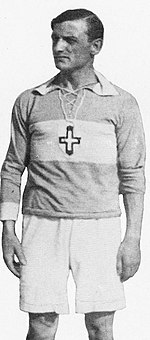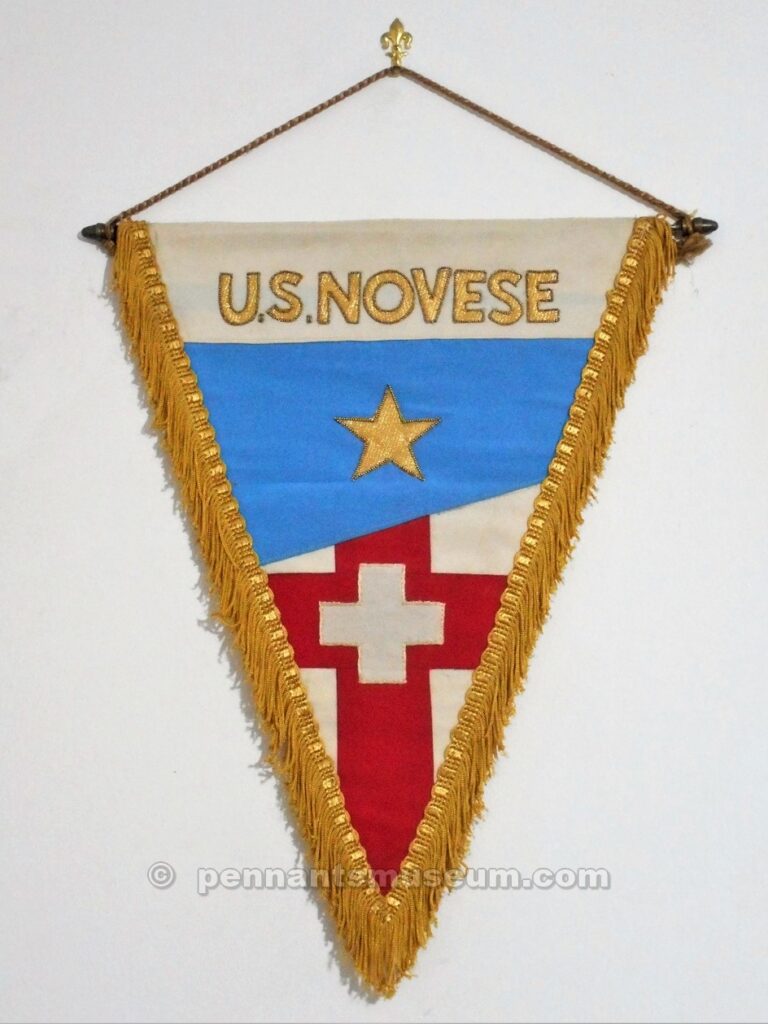Novi Ligure, una cittadina di ventottomila abitanti in provincia di Alessandria, negli anni venti salì alla ribalta delle cronache sportive sostanzialmente per due motivi. Il primo perché era nativo di Novi Costantino (Costante) Girandengo, il primo campionissimo del ciclismo, che tra la fine degli anni dieci e gli anni venti vinceva due Giri d’Italia e tutte le più importanti “classiche” italiane dei tempi tra cui la Milano – Sanremo. Ma era anche la città dove undici ragazzi in tenuta azzurra con fascia bianca diedero vita a un vero capolavoro: vincere il campionato di calcio nella stagione 1921-1922, quello dei campionati organizzati dalla FIGC e dalla Confederazione Calcistica Italiana (CCI). Se a questo aggiungiamo il fatto che l’Unione Sportiva Novese era nata soltanto nel 1919, tre anni prima, e che era una neopromossa, allora possiamo certamente affermare che quella vittoria fu davvero un’impresa irripetibile.
Al fantastico successo si arrivò attraverso le clamorose decisioni maturate nell’estate del 1921 con il tentativo di approvazione del cosiddetto “Piano Pozzo” riforma proposta dal grandioso Vittorio Pozzo che intendeva ottenere una profonda riorganizzazione della struttura del calcio nazionale con una Prima Categoria (la serie A dell’epoca) che si sarebbe dovuto disputare tra 24 squadre, rappresentative di sei regioni (Piemonte, Liguria, Lombardia, Veneto, Toscana e Emilia – Romagna). Tale decisione sarebbe andata a diretto danno della Novese costretta a non disputare la massima categoria nazionale, impegno a cui i piemontesi, grazie alla passione e alla brillantezza del suo Presidente Mario Ferretti (il “Sire di Novi”), si stavano avvicinando con una squadra davvero competitiva, rafforzata con l’acquisto di calciatori di fama tra cui il nazionale Zizi Cevenini III.

La riforma alla fine non prese piede soprattutto per il diniego delle piccole Società e, quale compromesso, si giunse alla decisione di disputare due distinti campionati: quello organizzato dalla FIGC a cui presero parte le cosiddette squadre minori come la Novese mentre le “grandi” (Genoa, Pro Vercelli, Juventus, Inter, Milan) confluirono nel campionato del C.C.I.. Il resto è storia con la Novese che si aggiudicò il titolo ai danni della Sampierdarenese in un’epica finale che si giocò su tre partite con lo spareggio, in campo neutro, risolta da una rete di Carletto Gambarotta ai supplementari. La stagione successiva il campionato di calcio riprese la sua normale fisionomia con il reintegro dei club fuoriusciti dalla FIGC e le ambizioni della Novese furono ridimensionate. La squadra riuscì a salvarsi dalla retrocessione che, però, arrivo nell’anno seguente.
La leggenda di quella squadra e dell’iconica tenuta da gioco è testimoniata da un gagliardetto, in uso negli anni settanta, in cui compare la croce bianca su campo rosso, simbolo della città nonché la stella dorata in ricordo dell’onorificenza al merito sportivo che il CONI concesse alla Novese nel 1970. La speranza è che questa gloriosa squadra, che nella stagione 2016-2017 ha conosciuto l’onta del fallimento, possa ritornare, quanto prima, ai palcoscenici che il suo blasone merita.
the legend of the white – banded
Novi Ligure, a town of twenty-eight thousand inhabitants in the province of Alessandria, in the twenties rose to the fore in the sports news essentially for two reasons. The first because he was a native of Novi Costantino (Costante) Girandengo, the very first champion of cycling, who between the end of the ten and the twenties won two Tours of Italy and all the most important Italian “classics” of the times including the Milan – Sanremo. But it was also the city where eleven boys in blue uniforms with white bands gave life to a real masterpiece: winning the football championship in the 1921-1922 season, the one of the championships organized by the FIGC and the Italian Football Confederation (CCI). If we add to this the fact that the Unione Sportiva Novese was born only in 1919, three years earlier, and that it was a newly promoted one, then we can certainly say that that victory was truly an unrepeatable feat.
The fantastic success was achieved through the sensational decisions made in the summer of 1921 with the attempt to approve the so-called “Piano Pozzo” reform proposed by the great Vittorio Pozzo who intended to obtain a profound reorganization of the structure of national football with a First Category (the serie A of the time) which should have been played between 24 teams, representing six regions (Piedmont, Liguria, Lombardy, Veneto, Tuscany and Emilia – Romagna). This decision would have been to the direct detriment of Novese, forced not to compete in the highest national category, a commitment to which the Piedmontese, thanks to the passion and brilliance of its President Mario Ferretti (the “Sire of Novi“), were approaching with a team really competitive, reinforced with the purchase of famous players including the national team player Zizi Cevenini III.
In the end, the reform did not take hold mainly due to the refusal of small clubs and, as a compromise, the decision was reached to play two distinct championships: the one organized by the FIGC in which the so-called minor teams such as Novese took part, while the “large” ( Genoa, Pro Vercelli, Juventus, Inter, Milan) merged into the CCI championship. The rest is history with Novese who won the title against Sampierdarenese in an epic final that was played over three games with the play-off, on the pitch neutral, resolved by a goal by Carletto Gambarotta in extra time. The following season the football championship resumed its normal appearance with the reintegration of the clubs that left the FIGC and the ambitions of Novese were reduced. The team managed to save itself from relegation which, however, arrived the following year.
The legend of that team and of the iconic game outfit is testified by a pennant, in use in the seventies, in which the white cross appears on a red field, symbol of the city as well as the golden star in memory of the honor for sporting merit that CONI granted to Novese in 1970. The hope is that this glorious team, which in the 2016-2017 season experienced the shame of failure, will be able to return, as soon as possible, to other stages deserving of its fame.


